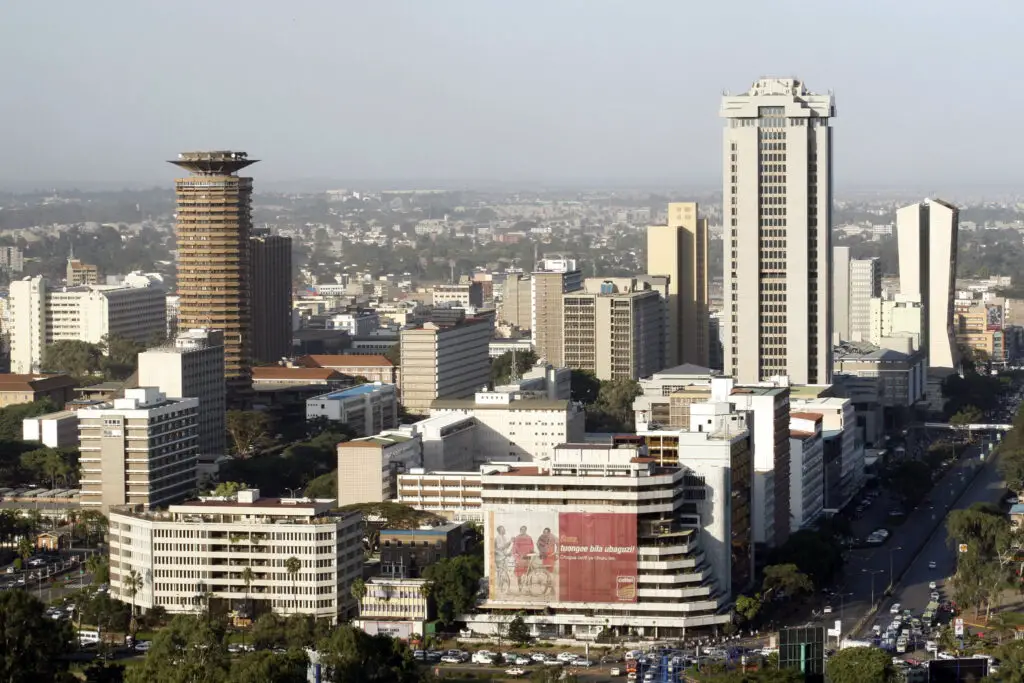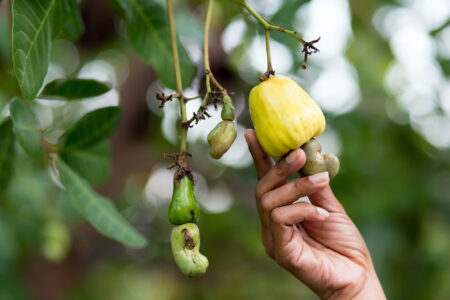- Kenya’s business conditions weakened slightly in March despite easing inflation.
- Kenyan firms reduced their purchases of inputs in line with weaker sales.
- Most businesses remain optimistic about their workforce size and revenue growth in the year’s second quarter (April-June).
The latest Stanbic Bank Kenya Purchasing Managers’ Index indicates that Kenya’s business conditions weakened slightly in March despite easing inflation.
The deterioration in operating conditions was witnessed across the private sector as order book volumes and output levels contracted. The downturn contrasted with February, which saw an improvement in the private sector for the first time in six months.
Despite the decline, the survey data provided some positive signals for Kenyan businesses. Staffing and inventories showed further growth, indicating potential expansion opportunities.
Additionally, input cost inflation slowed to its lowest level in over three years amid a recovery in the shilling against the US dollar and other major currencies, including those of neighbouring countries, as the East African Community remains a vital trading partner for Kenya.
Savings were passed on to customers as output prices also rose slower. The headline figure derived from the survey is the Purchasing Managers’ Index; readings above 50.0 signal an improvement in business conditions on the previous month, while readings below 50.0 show a deterioration.
During the month under review, the headline PMI registered below the 50.0 neutral mark, falling to 49.7 from 51.3 in February. This reading was the lowest recorded for three months and signalled a slight decline in operating conditions.
“Private sector activity softened in March, offsetting the expansion during February. Output, new orders, and purchasing activity were contracted due to fewer sales and less readily available cash flow. Firms noted that, despite lower inflation, a stronger shilling against the USD in March, and increased marketing efforts, cost-of-living pressures are still subduing consumer demand,” Christopher Legilisho, Economist at Standard Bank, said.
In March, business activity in the Kenyan private sector reversed its course after showing the best upturn in over a year during February. Output contracted modestly, which survey panellists attributed to lower new order intakes and cash flow problems.
Read also: Kenya’s business conditions improved in February, but the future remains uncertain.
Decline in new orders
The decline in new orders signalled by the survey was only fractional, however, as firms reported easing price pressures supporting customer spending. Indeed, price metrics pointed to a sustained slowdown in inflationary pressures at the end of the first quarter.
Overall input costs rose at the slowest pace since February 2021, as a more robust exchange rate in the Kenyan shilling against the US dollar helped reduce import costs.
Lower fuel prices were also cited, though some firms reported higher VAT payments. The softer increase in input prices led to a weaker uptick in selling charges, the lowest since January 2022 and one that was below the long-run trend.
Kenyan firms meanwhile reduced their purchases of inputs in line with weaker sales. The rate of decrease was the quickest recorded since last November. Reduced buying contributed to shorter supplier delivery times as pressure on vendors relaxed.
Concurrently, firms built their inventories for the second month, driven by hopes of improving customer demand. For a similar reason, companies raised their employment numbers for the third month of March.
That said, job creation was marginal and the slowest in this growth sequence. Expectations towards future output rose to a four-month high, following the lowest sentiment on record in February.
Lower inflation trends boosted the demand outlook and supported expansion plans, with services and wholesale and retail firms being the most optimistic. That said, positively, firms continued to hire and increase inventories because they foresee improved demand, Legilisho noted.
Though off a low base, business expectations for 2024 recovered somewhat, led by wholesale and retail services firms; the index for future expectations had hit the weakest level on record in February.
“Also encouragingly, firms noted input, purchasing and output price pressures as easing due to fuel prices declining further and a stronger shilling against the USD in March. Further, staff costs were stable for a second month in March,” added Legilisho.
Read Also: President Ruto: Engineering innovation can transform Kenya’s economy.
Optimism about Kenya’s business conditions
A survey by the Kenya National Chamber of Commerce and Industry (KNCCI) indicates that, albeit not highly confident, most businesses remain optimistic about their workforce size and revenue growth in the second quarter of the year (April-June).
The hospitality and tourism sector is the most confident in revenue growth, while real estate and construction are at the opposite end of the spectrum, according to the KNCCI quarterly business barometer.
The energy sector is the most confident in workforce size growth, while professional services are at the opposite end of the spectrum. While a significant portion of businesses (39%) foresee a decrease in the cost of primary inputs, an equivalent proportion (39%) anticipates an increase.
The energy sector is most optimistic about input cost reduction. In contrast, the ICT and professional services sectors may experience significant fluctuations despite optimism for expansion in Q2 (77%), financial constraints (34%), regulations (16%), and supply chain instability (14%) loom as significant obstacles.
Transport and energy sectors recognize that supply chain instability and climate change might deter their performance more than other sectors.
“It is encouraging to see that most of the businesses sampled are optimistic about expanding their operations and growing both revenue and workforce in Q2 despite the macroeconomic challenges affecting our economy,” KNCCI president Erick Rutto said.
Read Also: Bridging the Trade Gap Between Kenya and Tanzania
Employment
According to the PMI by Stanbic, Kenyan businesses increased their workforces for the third consecutive month in March, with survey members linking this to stabler demand conditions and increased marketing efforts.
However, the degree to which staff numbers rose was the softest recorded in the current sequence and only slight.
Kenyan firms’ outstanding business levels ticked higher at the close of the first quarter. The expansion followed a decrease in the prior survey period. Although the rise was the fastest observed since October 2023, it was only mild overall.
S&P Global compiles the Stanbic Bank Kenya PMI from responses to questionnaires sent to purchasing managers in a panel of around 400 private sector companies.
The panel is stratified by detailed sector and company workforce size based on contributions to GDP. The survey covers agriculture, mining, manufacturing, construction, wholesale, retail and services.
Data were first collected in January 2014. Survey responses are collected in the second half of each month and indicate the change in direction compared to the previous month.
Read also: Kenyan Businesses Emerge Optimistic in Survey Despite Hurdles
Economic growth
Meanwhile, the government expects the economy to remain resilient, with the National Treasury projecting a growth of 6.3 per cent this year.
Overall GDP growth is projected to increase from 6.1 per cent last year, having picked up from 4.4 per cent in 2022 when the country took a hit from the impact of the Covid-19 pandemic.
According to the Treasury, this year’s growth will be driven by raising agricultural productivity as the government implements critical components of the Bottom Up Economic Transformation Agenda (BETA), President William Ruto’s plan to drive growth and jobs.
The country also plans to improve the foreign exchange balance by promoting exports to improve forex reserves and ease foreign debt repayment pressure.
“These objectives will be achieved through targeted investments in BETA core pillars and enablers,” Treasury Cabinet Secretary Njuguna Ndungu said.
Treasury’s growth projection is higher than the World Bank’s forecast, which puts 2024 GDP expansion at 4.5–5.2 per cent.
Improved investor confidence and credit to the private sector, helped by reduced domestic borrowing by the government, will strengthen private investment over the medium term, the World Bank noted in its recent country update.
According to the Kenya Economic Update (KEU) report, debt-related vulnerabilities persist, and rising debt costs constrain the government’s ability to address development challenges.
Kenya is, however, making progress and has reduced the primary deficit from 1.6 per cent of GDP in the financial year 2021-22 to 0.8 per cent of GDP in 2022-23, while the overall deficit decreased from 6.2 per cent to 5.6 per cent during the same period and is expected to reduce further to 5.4 per cent in 2023/24.
“Kenya will need to balance the short-term challenges of macroeconomic stability with the need to focus on policies for achieving longer-term growth that includes all in society,” said Naomi Mathenge, World Bank Senior Economist and author of KEU.
Read Also: World Bank: Kenya’s 5.2 per cent Growth Forecast Depends on State’s Loan Appetite











